Carabiner Gate Mass
The terms “Gate Flutter” and “Gate Whiplash” often come up in conversation when rock climbers discuss different carabiner gate types. Definitions for the these terms have generally evolved from common usage.
Gate Flutter: A mode of oscillation setup in the host carabiner by rope running rapidly trough the system. In theory, this oscillation may have harmonics that cause the carabiner gate to “flutter” open and shut at high speed.
Gate Whiplash: When the spine of a carabiner hits a solid object, the mass and associated momentum of the gate will mean that it will want to keep moving as the carabiner stops.
The International Climbing and Mountaineering Federation (UIAA) discusses these behaviours in an article Karabiners: Be Aware! (Jean Franck Charlet, Safety Commission, UIAA Journal 3/2000). Note that the oscillations referred to in this article are more about long standing waves set up in the rope rather than the contact vibration of rope running over aluminium.
We decided to look more closely at “Gate Whiplash” in the lab.
A commonly held belief is that wire-gate carabiners are less likely to suffer gate whiplash than their solid-gate counterparts. This sounds logical because a solid gate has more mass and thus has more energy to dissipate when it stops suddenly. An analogy is to consider the relative impacts of a tennis ball and a house brick against a wall.
There are two mechanisms that oppose the opening motion: the gate spring and, if the gate opens fully, the spine of the carabiner.
So, there are two ways to reduce this “whiplash”, either increase the spring tension or reduce the mass of the gate. Increasing spring tension is reasonable but only to the point where clipping a rope one-handed becomes too difficult.
In an attempt to observe the difference resulting from gate mass we we set up two relatively similar carabiners on slings, clipped ropes, and then gave each a flick and recorded the impacts using a 1,000 frame-per-second video camera.
The two carabiners used were:
- Black Diamond Quicksilver solid–bent-gate (Gate-closed 22kN, Gate-open 7kN).
- Black Diamond HotWire wire-gate (Gate-closed 25kN, Gate-open 9kN).
Both these carabiners were more than ten years old, have been well used, but still pass a thorough functional and visual inspection.
Note that this test is far from scientific and there are clear limitations including:
- Inconsistent application of force. The ropes were flicked manually. This was practiced and attempt was made to achieve some consistency.
- Differing gate spring tensions. The “feel’ of the two gate mechanisms was similar but slightly different.
- Angle and point of impact. The orientation of the carabiner at the point of impact will influence the transfer of energy and this is further complicated by the restricted angle of the gate-swing.
This was first done a few times to get a roughly consistent flick and then filmed as shown below.
The lack of science makes it is impossible to read too much into this video however it does seem to indicate:
- Gate Whiplash can occur.
- Solid-gate carabiners may open further and stay open for longer than their wire-gate counterparts.
Conclusion
The biggest reasonable concern about gate whiplash is the potential for the gate to be open at the precise moment when the rope applies its highest force to arrest a falling climber. Typically, carabiner manufacturers quote both a gate open and closed strength and climbers should be aware of both of these.
The UIAA states (here) that a real climbing fall has a maximum force of 5kN. It is not clear what this value refers to but, if it is the rope tension, then the theoretical force applied to the top point of the system could be twice this. The anchor ‘feels’ both strands of rope pulling downwards equally.
The gate-open strengths of the two carabiners in this video are 7kN and 9kN. A climbing fall could theoretically exceed this force. Many manufacturers are also now stating that their hardware should never be loaded to more than 1/4 of an MBS rating, as loading above this contributes significantly to material fatigue.
Therefore, theoretically this phenomenon could lead to carabiners breaking or being permanently damaged. However, I have not come across any account where it is certain that a carabiner has broken due to whiplash in the field. There have been accounts of carabiners breaking during falls, however it is very difficult to reconstruct these incidents accurately and confirm the mechanism of failure. More generally, the credible accounts of carabiner failure often indicate some form of misuse, such as loading laterally over an edge, over loading, or some other mechanical interference.
© Richard Delaney, RopeLab, 2016
Add a Comment
You must be logged in to post a comment.






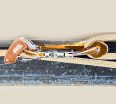


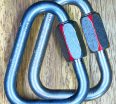
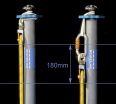
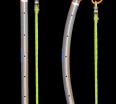
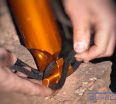
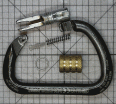
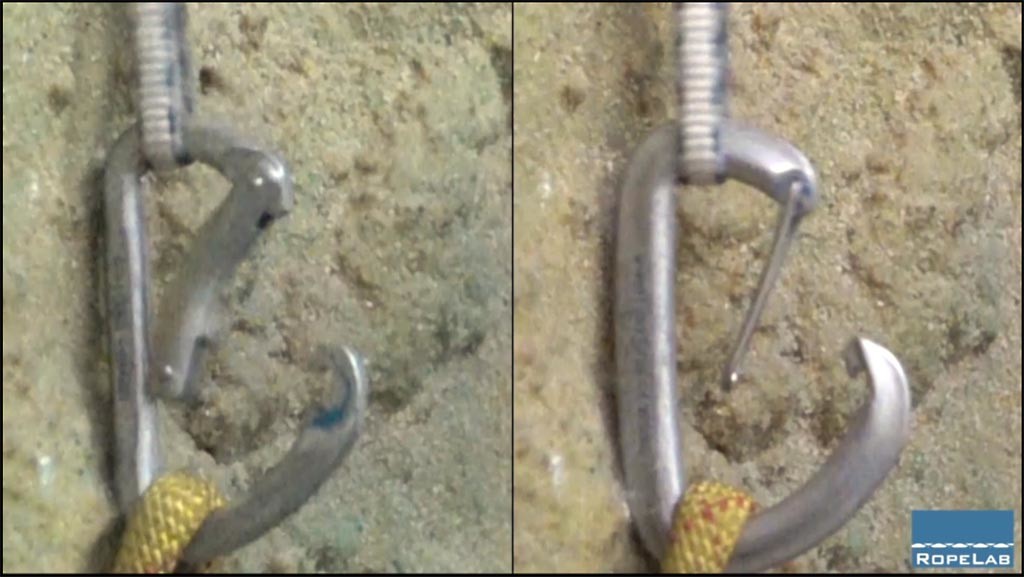

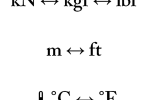
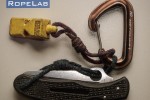


In terms of the time that the gate stays open, it might be worth considering the combined effect of the mass of the gate with spring tension as it applies to being able to return or close the gate.
What I mean is that the increased mass of a gate means that the gate will overcome the spring tension to open more fully (as the video indicates), but that in addition to that when closing a gate with increased mass it will mean that the spring has to work harder to return the gate once open. This too seems to be indicated in the video where the wire gate appears to return at a much greater speed (overcoming momentum and achieving a higher velocity in a shorter distance/period?).
So perhaps it could be said “Solid-gate carabiners may open further and take longer to close longer than their wire-gate counterparts”?
Cheers for the great video.